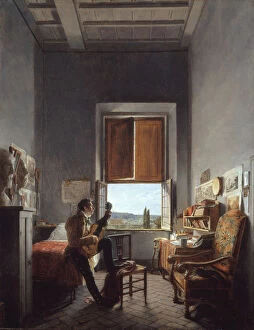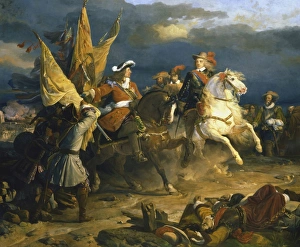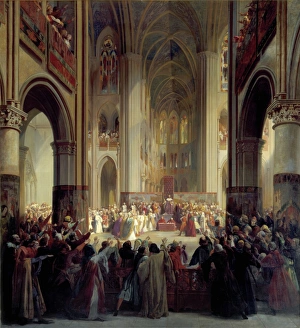Alaux Collection
"Exploring History through the Art of Alaux" Step into the captivating world of Jean Alaux, a talented artist whose brushstrokes bring historical moments to life
All Professionally Made to Order for Quick Shipping
"Exploring History through the Art of Alaux" Step into the captivating world of Jean Alaux, a talented artist whose brushstrokes bring historical moments to life. From portraits of renowned figures like Victor Hugo and Leon Palliere to grand scenes depicting significant events, Alaux's works offer a glimpse into the past. In his portrait of Victor Hugo, painted in 1822, Alaux captures the essence of the celebrated writer with remarkable detail and emotion. The intensity in Hugo's eyes reflects his passion for literature that would shape generations to come. Moving on to "Leon Palliere in His Room at Villa Medici, " we are transported back to Rome in 1817. Through Alaux's skilled hand, we witness Palliere engrossed in his thoughts within this tranquil setting. The painting exudes an air of introspection and creativity. It also delves into political history with pieces such as "Address of Congratulations to Louis-Philippe. " This artwork showcases the artist's ability to capture not only individuals but also their significance within a larger context. We can almost feel the atmosphere buzzing with excitement as congratulations are offered. "The Assembly of Notables at Rouen by Henry IV" takes us even further back in time, transporting us straight into 1596 France. With meticulous attention to detail, Alaux recreates this pivotal gathering where decisions were made that shaped the nation's future. Continuing our journey through history, we encounter paintings like "Philip IV establishing Parliament in Paris" and "Louis X emancipating serfs. " These artworks highlight important milestones that forever altered society during medieval times. Alaux doesn't limit himself solely to French history; he also explores iconic moments from other countries' pasts. In "Charlemagne crowning his son Louis the Pious, " we witness a father passing down power and responsibility—a poignant scene symbolizing dynastic succession.

















